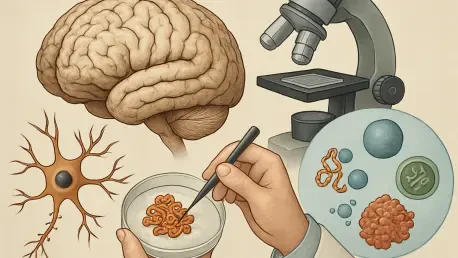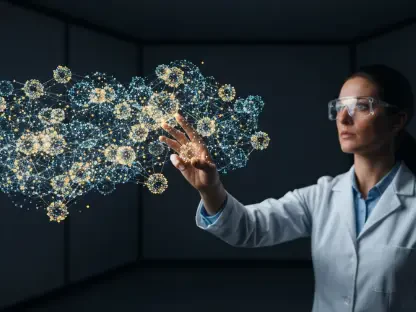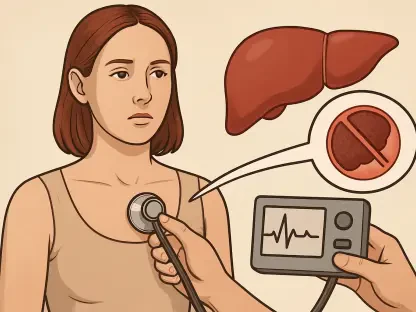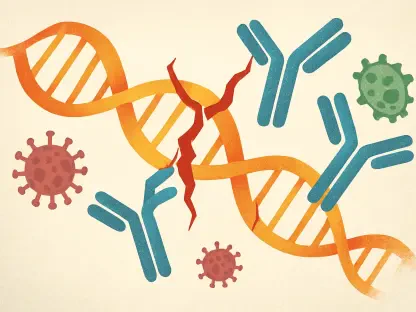Welcome to an insightful conversation with Ivan Kairatov, a renowned biopharma expert with extensive experience in research and development, as well as a deep understanding of technological innovation in the industry. Today, we dive into groundbreaking research on brain aging, exploring the intricate balance of proteins, the unexpected challenges in their production, and how these discoveries could reshape our understanding of neurodegenerative diseases. Our discussion touches on the critical role of proteostasis, surprising findings about protein loss despite intact genetic instructions, and the unique model organism that’s helping unlock these mysteries.
Can you start by explaining what proteostasis is and why it’s so vital for maintaining brain health?
Proteostasis is essentially the cellular balancing act of managing proteins—making sure they’re produced, folded correctly, and broken down when they’re no longer needed or are damaged. It’s a fundamental process for all cells, but it’s especially critical in the brain because neurons are highly specialized and don’t regenerate easily. When proteostasis is working well, it keeps brain cells functioning smoothly, supporting everything from memory to motor control. But as we age, this balance can falter, leading to the buildup of misfolded proteins or the loss of essential ones, which can contribute to diseases like Alzheimer’s or Parkinson’s.
How does a disruption in this protein balance specifically impact the aging brain?
When proteostasis is disrupted in the aging brain, you often see a cascade of problems. For instance, if proteins aren’t being made correctly or degraded properly, toxic aggregates can form, which are a hallmark of many neurodegenerative conditions. Additionally, the loss of key proteins—ones involved in DNA repair or energy production—can impair a neuron’s ability to maintain itself, leading to cell stress or even death. Over time, this contributes to cognitive decline and other age-related issues we observe in the brain.
Your research highlights a fascinating disconnect where certain proteins are lost in the aging brain despite their genetic blueprints remaining intact. Can you walk us through this discovery?
Absolutely. What we found is that in the aging brain, there’s a significant drop in specific proteins, particularly those rich in basic amino acids like arginine and lysine. These proteins are crucial for processes like DNA and RNA handling and even building ribosomes themselves. What’s striking is that the mRNA—the genetic instructions for these proteins—is still present at normal levels. This told us the issue wasn’t with the blueprint itself but somewhere downstream in the process of turning that blueprint into a functional protein.
What’s causing this production issue, especially since it’s not about the proteins being broken down too quickly?
The core problem lies in translation, the step where ribosomes read mRNA to assemble proteins. In aging brains, ribosomes tend to get stuck or even collide when they encounter sequences heavy in basic amino acids. These pauses disrupt the entire process, so the protein either isn’t completed correctly or isn’t made at all. It’s not about degradation—when we blocked the cell’s protein disposal system, the loss of these proteins persisted, confirming that the bottleneck is in production, not breakdown.
Can you tell us about the model organism used in this research and why it was chosen for studying brain aging?
We worked with the killifish, a small fish known for its incredibly short lifespan, which makes it an excellent model for aging studies. The killifish shows clear age-related changes in its brain, mimicking some of the neurodegenerative processes we see in humans. Its rapid aging cycle allows us to observe these changes over a compressed timeframe, which is invaluable for research. Plus, its brain exhibits similar protein imbalances and cellular stress as human brains do with age, making it a relevant model for drawing parallels to our own biology.
How does a reduction in ribosome efficiency trigger broader changes in the brain’s protein composition?
When ribosome function declines, it creates a domino effect. Some mRNAs are still translated efficiently, while others—especially those coding for proteins with basic amino acids—get bogged down by ribosomal stalls. This uneven translation alters the overall protein makeup of the brain, disproportionately affecting areas like mitochondria, which handle energy production, and the nervous system itself. This imbalance disrupts critical cellular functions and amplifies the hallmarks of aging, like cellular stress and impaired repair mechanisms.
How do these findings connect to the broader hallmarks of aging and potential neurodegenerative diseases?
Our research ties directly into several hallmarks of aging, such as mitochondrial dysfunction and loss of proteostasis. When key proteins for energy production or DNA repair aren’t made properly due to ribosomal issues, cells can’t cope with stress or damage as effectively. This creates a vicious cycle in the brain, where dysfunction feeds further dysfunction. Over time, these cellular failures are likely contributors to neurodegenerative diseases like Alzheimer’s, where protein imbalances and cellular stress are central features.
What do you foresee for the future of aging research based on these insights into protein synthesis?
I’m optimistic that these findings open up new avenues for understanding and potentially intervening in brain aging. If we can target the specific mechanisms causing ribosomal stalling, we might be able to preserve the production of critical proteins and slow down some age-related decline. This could lead to therapies that address the root causes of neurodegenerative diseases rather than just managing symptoms. In the coming years, I expect we’ll see more focus on translation processes as a therapeutic target, which could revolutionize how we approach aging and brain health.









